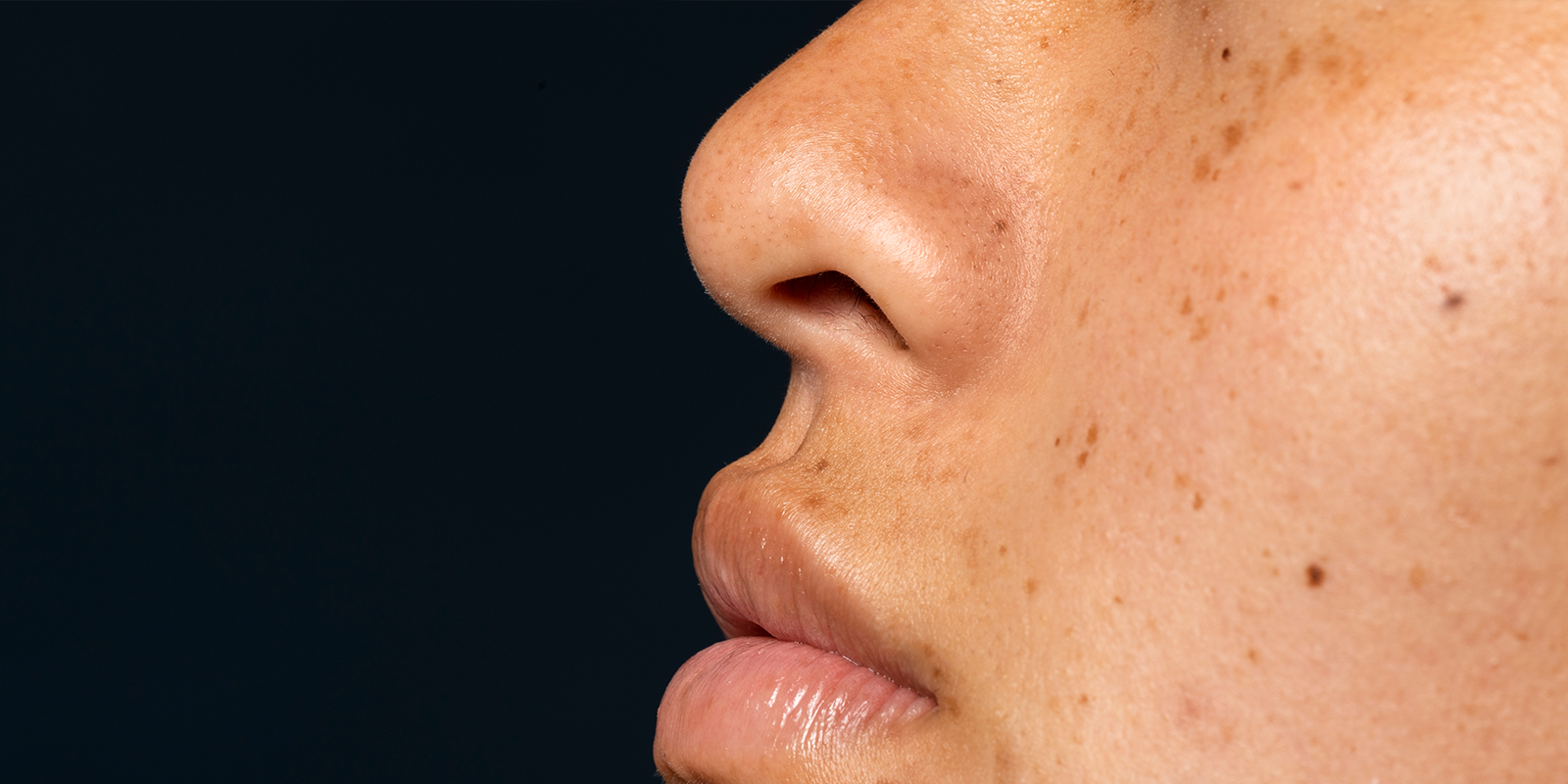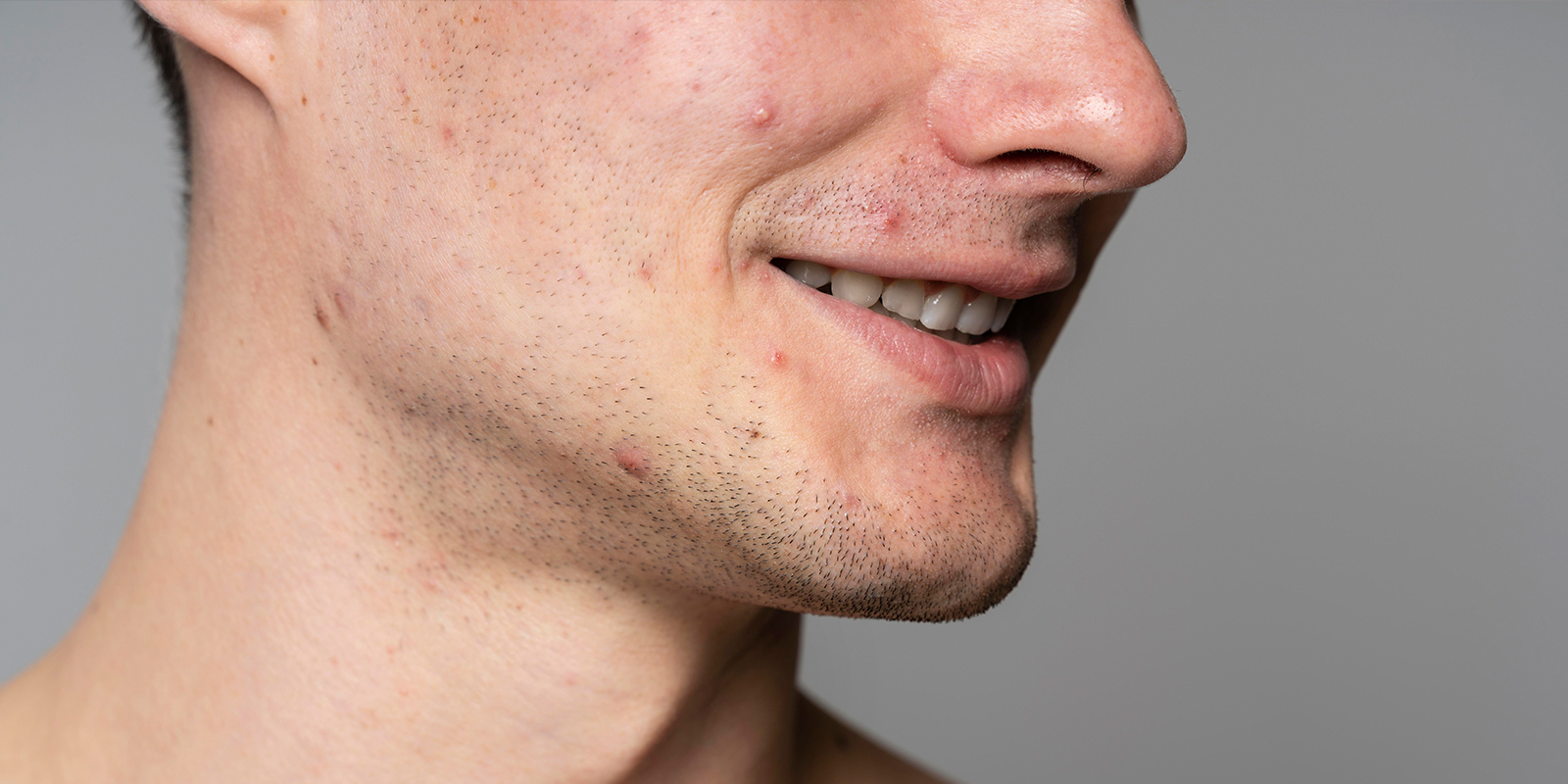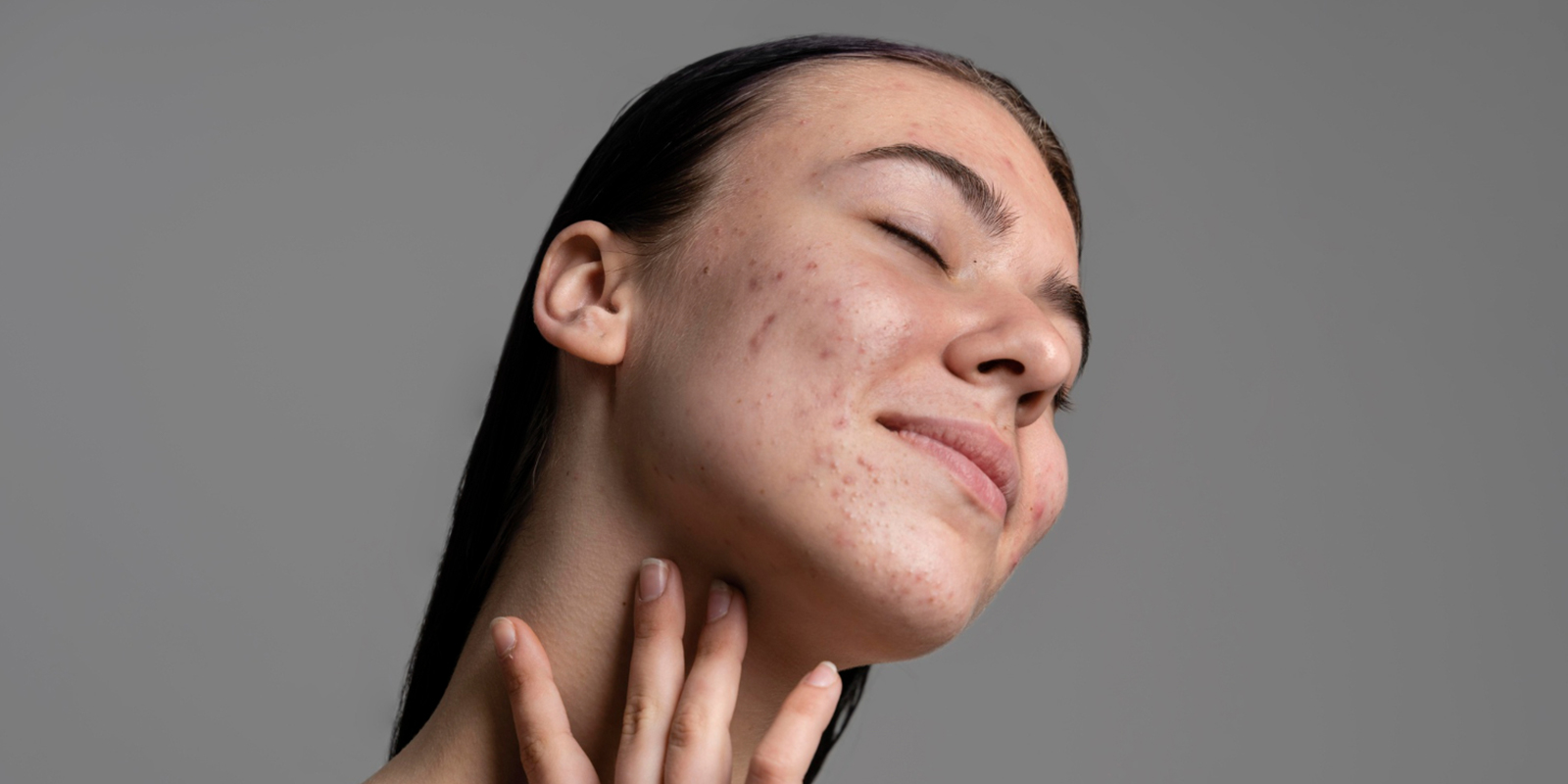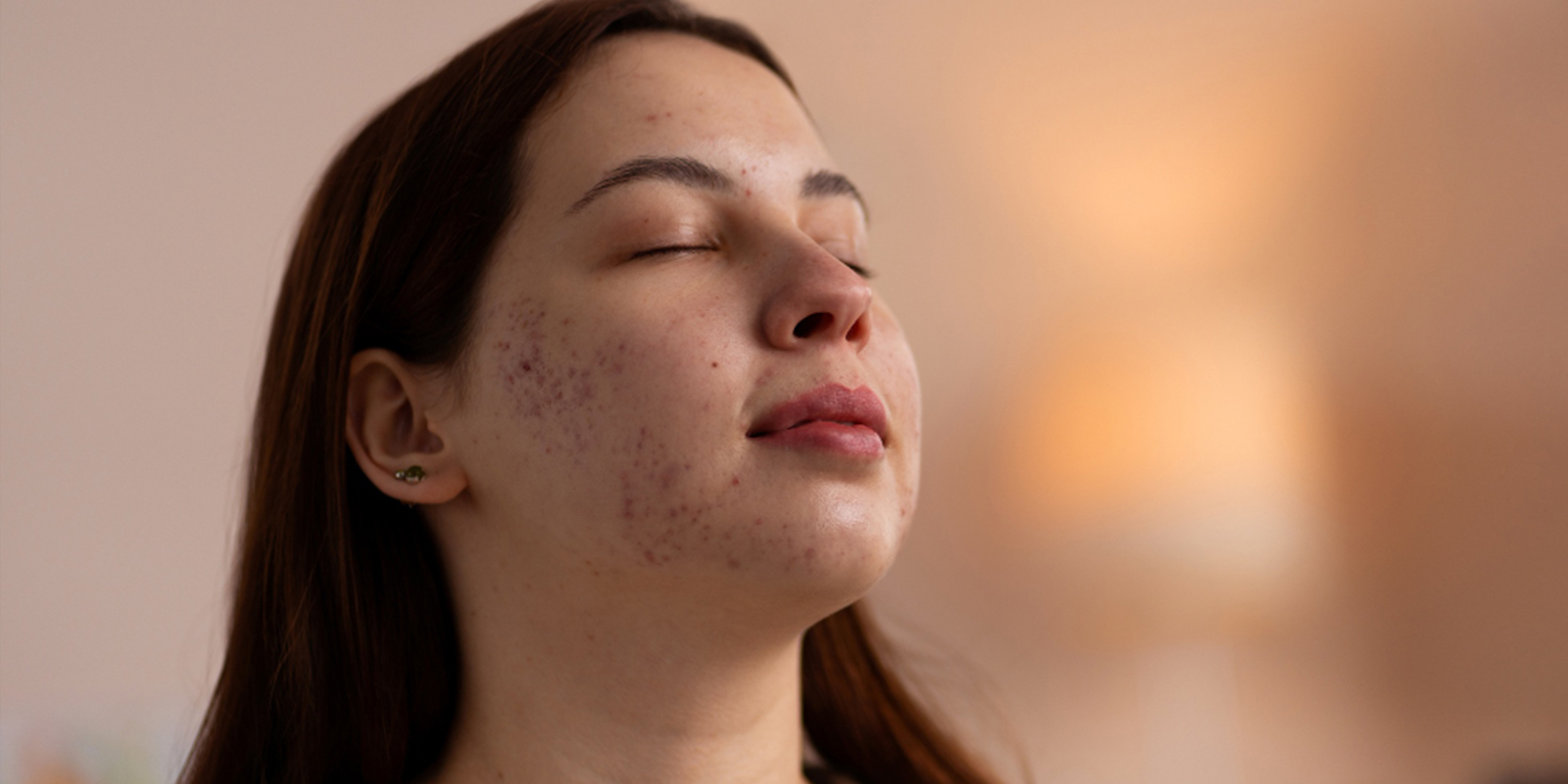
How To Get Rid of Chin Acne
By Sadia | Wednesday, February 5, 2025
Sometimes you may notice redness and chin acne, dry skin, among other signs that your skin's rough. If you have them, you'll wonder what could be the reasons for these skin problems and then look forward to figuring out a solution to eradicate the problem entirely.
One option you could be interested in trying out is face mapping. This is a concept with a traditional history that is ingrained within both Chinese medicine (GuaSha) and Ayurvedic treatment.
Face mapping is believed to have originated from ancient Chinese and Ayurvedic medicine. However, there is little scientific evidence to back this theory that health problems with organs in the body have a connection to where acne breaks out on the face.
However, some research does imply that certain factors can relate to chin acne on specific areas of the face.
Today, people who apply face mapping techniques state that the key idea behind this technique is that the shape of how chin acne or redness appears on your face could be a sign of the other significant problems that are occurring in your body, especially in key organs such as the kidneys, your liver, and your heart.

What is face mapping?
Face mapping is rooted in a traditional medical practice that encompasses a merger of problems that affect faces as well as overall general personal well-being.
Experts, like dermatologists who focus on this area, believe that face mapping is a method that merges foundations from both Eastern and Western concepts of medicine. It's because it takes into consideration the grounds of several facial ailments, which comprise food allergies, diet, stress levels, hormones, genetics, and the kind of body constitution/personality.
Chin Acne Locations and Their Causes
The face is categorized into three key zones – upper, middle, and lower. Any faults within the organs and the systems - immune, excretory, endocrine, digestive, circulatory, nervous, and respiratory – will be displayed on the face in the form of breakouts, redness, dryness or irritation.
It’s said that if the energy of a person was positive, the skin complexion would be clear and in fine condition. Any faulty zone or illness would be echoed by a change in color, texture, and appearance.

Hairline and Temples
Possible causes of temple and hairline chin acne can include sudden or gradual changes in hormone levels, specific medications such as corticosteroids, makeup, skin care products, general sweating, and/or genetics. Temple chin acne could also be triggered by wearing helmets, hats, or other headwear. Headwear can lock in sweat close to your scalp, which can lead to irritation and chin acne.
Several hair products — especially those comprising oil — can also cause chin acne. Hair products that lead to chin acne include gels, sprays, relaxers, mousse, and hair dyes.
Pomade chin acne
While Pomade is a fine hair styling product that makes the hair slick and shiny, it can cause chin acne breakouts, especially when they’re made with comedogenic ingredients. Pore-clogging ingredients are normally harmless for your hair but can lead to forehead chin acne and visible breakouts along the hairline. When your chin acne skincare routine doesn’t eliminate or lessen the cause of your chin acne along the hairline, it’s time to change your hairstyling products.
Avoid using products with comedogenic ingredients, instead, choose specific hair products with non-comedogenic ingredients so your pores keep clear. Look for products that are labeled “Won’t clog pores,” “oil-free,” or “non-comedogenic.”
T-zone: Forehead, Nose, and Chin
Unlike the rest of your face, your T-zone has far more oil glands, making it oilier and more chin acne-prone. Precisely, chin acne often occurs when excess oil and dead skin cells merge together. This leads to the blockage of your pores, thus generating whiteheads and blackheads. As the oil amasses, bacteria can multiply and trigger inflamed pimples, including pustules, papules, and cysts.
The sebaceous glands generate sebum to take care of the skin, which is an oily substance that moisturizes and safeguards the skin. Additional sebum production can lead to chin acne. Excessive oil production signifies that chin acne breakouts may happen more often in these specific areas than in other parts of the face.
One study focused on around 914 people with chin acne in the T-zone areas. The researchers determined that there is indeed a link between excessive sebum generation and the amount of chin acne in the T-zone, primarily on the forehead and nose.
The study concluded that there is a noteworthy correlation between the frequent sebum production level and the amount, percentage, and location of chin acne abrasions in a bigger chin acne patient group, using an objective bioengineering method.
Cheeks
Factors contributing to the usage of dirty pillowcases, holding a phone close against the face, touching the face with unwashed hands, and wearing clothing with a chin strap can lead to cheek chin acne. Breakouts of chin acne on the cheeks can be caused by the development of chin acne mechanica, which is produced due to friction or rubbing of the skin.
Jawline
Scientists have been inclined to link chin acne around the jawline and U-zone to hormone fluctuations. However, other researchers have contested and countered this belief. There is no evidence to support the hypothesis that chin acne around the U-zone - jaw and chin will correctly predict if a person suffers from hormonal disturbance. In males and females, the adrenal glands generate a hormone called DHEA-S.
One study found that females with adult chin acne had mild to discreetly higher levels of this hormone. Research has also concluded that 39–85% of females with chin acne have worse chin acne in the days before the start of menstruation. Since not all people with chin acne do not have hormone irregularities, other aspects — such as amplified sensitivity of oil glands to hormones — may be the reason for chin acne to occur.
Face Yoga for Chin Acne
When you want your skin to be blemish-free, face yoga is the answer. It focuses on flushing out blood toxins, improving blood circulation to the facial muscles, dealing with hormonal disparities, lessening stress, or fighting any skin gland disorders, which are the major causes of chin acne and chin acne blemishes. Face yoga is one of the finest home remedies for a chin acne-free face. Face yoga betters your skin health by delivering improved blood circulation, oxygenation, and nutrients to your face.
Face yoga helps to lift and shape the muscles under the facial skin, which presses lines and wrinkles. Massage helps to improve blood circulation, enhance lymphatic drainage, and relieve tension. Acupressure techniques enhance blood circulation and release stress, which can help avert headaches, reliving sinuses, and improve the quality of your sleep.
The FaceYogi app has very easy to follow guidelines and steps laid out in a very user-friendly manner. For the warmup, there are instructions about massaging and lifting the exterior facial muscles so they can be activated. Then the app’s guidelines direct to apply gentle and carefully analysed circular motions to the cheeks and both right and left sides of the head.
Next, the FaceYogi app laid out the easy-to-follow steps of the procedure of actual face massage that is performed on the face. After putting on the gloves for hygiene purposes, carefully press and move your hands on the face and slowly begin massaging both cheeks with your fingers while both of the thumbs are laid on the side of your face. The app nicely illustrates and shows how to massage the face while pressing the fingers in an upward position to relax the mouth. Then, the app detailed massaging with rapid circular movements towards the nasolabial area and the jawline for better coverage of those parts.

Face Yoga Exercises
Here are seven face yoga for chin acne exercises that target the chin area to help reduce sebum production and improve lymphatic drainage. For each face yoga for chin acne exercise, make sure your comfort level is attained. You may feel warmth or heat at times, but you shouldn’t suffer from pain or discomfort. Remember to always first wash your hands and your face. It wouldn’t hurt to use an oil, serum, or cleansing balm to help your fingers slide and press easily over your skin without it being too greasy.
1. Tension relief
Pressing this acupressure point may help lessen eyestrain. You can use it to calm down during the day or before sleeping. Gently press into the inner corner of your eyes for 30 seconds. Then, circle your fingers smoothly in one direction for 30 seconds. Repeat the same technique in the opposite direction.
2. Eye circles
This exercise may enhance oxygen circulation and lessen puffiness. Use light, gentle, and slow finger touches. Place your ring fingers on the inside of your eyebrows. Lightly tap your fingers toward the outside of your eyebrows. Now, slowly press into your temples for a few seconds. Continue to finger tap above your cheekbones to the inner corner of your eyes. Continue this technique for 30 seconds.
3. Brow smoother
This exercise will calm the frontalis muscle, the big muscle at the front of your forehead. Sometimes, this muscle is overused, which may cause stiffness, inflexibility, and stress expressions. Put your fingertips at the center of your forehead, facing the interior. Delicately press your fingertips into your forehead while you move your fingers toward your temples. Release your fingers. Continue this technique for 30 seconds.
4. Neck massage
A neck massage can improve lymphatic drainage and ease neck tension. It might also help constrict baggy skin around your jaw and neck. Tilt your head back a little. Place your four fingers at the top of your neck. Apply delicate pressure as you slide and press your fingers down to your collarbone. Press into your collarbone for a few seconds before taking off your fingers. Continue this technique for 30 seconds.
5. Jaw unlocker
This exercise can help involve the muscles in your jaw and neck. While sitting in a comfortable chair, make a full fist with your left hand and place it on the outside of your jaw with your thumb facing downwards. Now, turn your head toward your clenched fist, leading to a stretching sensation on the side of your neck. Don’t let your hand move. Then, gently press your jaw toward your hand for a few seconds. Delicately release. Now, repeat the same technique on the opposite side.
6. Lion’s breath
Also dubbed Lion’s Pose, this is a basic yoga breathing exercise that may help lessen stress and relax your facial muscles. While sitting in a comfortable chair, lean forward to prop your hands on your knees or on the floor. Now, inhale intensely through your nose. Open your mouth wide, let your tongue all the way out, and stretch your tongue toward your chin. By force, exhale your breath across the tip of your tongue while saying a “ha”. Now you can relax and breathe normally. Repeat this exercise up to 7 times. Now, breathe deeply for 1 to 3 minutes.
7. Face tapping
Tapping may help encourage relaxation and enhance blood circulation. Start at your forehead and use your fingertips to smoothly tap your skin following a rhythm. Continue the taping on all over your face and move on toward your jaw. Next, gently tap the front of your neck and across your shoulders. Then, move up sideways from the back of your neck to your head. Next, smoothly rub your palms together to warm them up. Now, cup your hands over your face and inhale deeply for quite a few deep breaths.
Face yoga for chin acne is the finest self-care practice that helps to achieve facial rejuvenation by relaxing, stretching, and firming up your facial muscles. incorporating face yoga into a daily routine to help manage and prevent chin acne may help you achieve what you need by initiating the healing power of your hands.
For best results, try devoting some time each day to practicing face yoga for chin acne. You can learn face yoga for chin acne techniques from the user-friendly FaceYogi app, which has clear and easy-to-follow instructions on how to practice face yoga for chin acne to improve blood circulation to facial muscles and relieve tension and stress.

Treatments
A wide assortment of topical treatments can work to combat bacteria, inflammation, and excessive oil production, all of which lead to chin acne breakout. You can buy topical treatments over the counter, so make sure to watch out for the following ingredients to tackle your chin acne:
Benzoyl peroxide: This mainly works by combating Propionibacterium chin acnes bacteria.
Topical retinoids: These work to lessen excessive oil production on the face and help unlock blocked pores.
Salicylic acid: This mainly works to unblock pores.
Consult immediately with your local dermatologist for proper medicinal prescription treatments if over-the-counter options are ineffective.
Prevention
Regularly and delicately wash the face once or twice per day, as well as after exercising or sweating from jogging or hanging out in hot weather, with a slight, nonabrasive cleanser and tepid, not too hot water. Any given product that comes into direct contact with the skin of the face should be free of any harmful oils and must contain noncomedogenic ingredients to help prevent chin acne.
Mobile phone screens have active germs, too. Avoid touching your face while using the phone, touching or taping the screen as it is also a leading cause of bacteria contraction, thus causing chin acne.
Avoid touching the face often and out of habit, as rubbing the skin frequently may also lead to chin acne. Also, make sure to sleep with clean sheets and cleaner pillowcases on your bed. Tugging the hair away from touching the face too much and washing the hair after using any given oily or waxy products may help lessen chin acne around the hairline. Abundant exercise, well-adjusted nutrition, and lesser stress and tension may also help avert chin acne breakouts.
Summary
There is little proven scientific evidence to support the hypothesis of ancient and traditional Chinese and Ayurvedic face mapping. Scientific studies propose that chin acne on certain areas of the face may be due to contacting bacteria, excessive skin oil production, hormonal changes, or various external factors, including but not limited to the use of waxy hair products.
Addressing these problems on hand with hygienic and clean lifestyle changes, practicing a good skincare routine, and trying out topical treatments may all help reduce and clear chin acne. If these treatment methods are not working out for you, or if you have long-term or unembellished chin acne, you should see your doctor or dermatologist for proper and prescribed treatment.
The reality is that sometimes, topical treatments may not work at all for those persistent and tenacious blemishes. If home remedies like face mapping and face yoga fails and you’re seriously concerned that your chin will ever clear from chin acne, your recommended course of action may be to talk to a dermatologist or primary care provider.
Finding an affordable and vicarious doctor who takes your skin worries seriously is not an easy task, though, which is why tips have been outlined here to assist you in your search.
These health professionals may not offer you the immediate fix you’re looking for, but they can help regulate the source and cause of your chin chin acne and plan your next course of action, which could include trying out prescription treatments like Onexton (benzoyl peroxide merged with another antibacterial called clindamycin) or numerous oral medications like doxycycline (recommended for restrained to severe, inflammatory chin acne) or spironolactone (for deep-rooted, tender chin acne along the jawline).
References
Theory, H. (2023, April 26). Face mapping for acne. Healing Theory.
Mukti, M. (2022, June 30). Face Mapping – How to read your skin from within. Mukti Organics
Choi, C., Choi, J., Park, K., & Youn, S. (2011). Facial sebum affects the development of acne, especially the distribution of inflammatory acne. Journal of the European Academy of Dermatology and Venereology
Dréno, B. (2015). Treatment of adult female acne: a new challenge. Journal of the European Academy of Dermatology and Venereology






